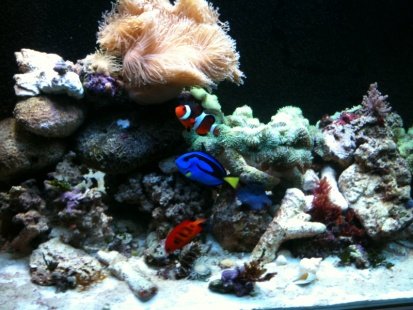I will differ with you on this point Greg. Here's why
Reef Central Online Community - View Single Post - LED lighting on a budget!
If you read through this thread, I bring up this point. I am an EE in the construction/design industry and do quite a bit of lighting design, and I was with you totally until I debated the point with kcress on RC.
To summarize, the maximum operating junction temperature on the CREE curves is 150 Celsius, or 302 Fahrenheit. The threshold for pain is right around 140 F. Most people who do DIY build and put 3W LEDs on stars onto 1" wide aluminum U-channel in free space (no hood/top) with no active cooling say they can put their hands on the aluminum w/o pain.
This operating temperature can be measured directly behind the LED on U-channel designs and as kcress reported, he did this and got 158F, which is half of the maximum junction operating temperature. Now keep in mind that the maximum operating temperature is the basis for the L70 date of the LED. That means that if you run the LED at full power and 150C (302F) for 50,000 hours, it will lose 30% of it's lumen output (L70 = hours to 70% of original output). So you would have to run it at that temperature for 10 hours a day and it would still last 13.7 years. (10 hrs x 365 d/y x 13.7 y = 50,005 hours). It lasts even longer if you design the system to start out using only 60% of the total maximum output, then ramp it up over time as the output drops. But then you'd have an LED system in 15 years that uses 8-10x the power of it's then current day counterparts (and that is not an exaggeration)
The argument kcress makes, which I am now in total agreement with him after debating him, is that if you're all gung-ho on LED right now and want to be on the cutting edge, you're going to want to still be there in 5 years so why waste money on a $300-$500 heat sink (or more, depending on the size) that is completely unnecessary and does nothing to realistically extend the lifetime of your LEDs, because the same can be achieved with U-channel and a few fans if you really are worried. Your driver is going to burn out before the LEDs do, and at that time you'll probably just upgrade to the next gen of LEDs for the same cost as it would to replace your old, outdated driver. And believe me, that is exactly the way it is going to go.
In the commercial lighting industry, they are all well aware of the fact that the MTBF of the driver electronics will be reached long before the LEDs reach their L70 date. This is why manufacturers are designing fixtures with upgradeable LED panels, because they know that when the drivers fail, it's easy to sell the customer on replacing the old panels with new ones that use even less energy and are even brighter, with better optics, etc.
But as far as heat sinks go, those ones that heat sinks usa and rapid LED sell are big time overkill and completely unnecessary.

